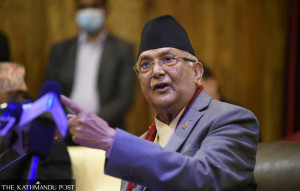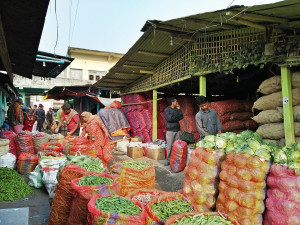Editorial
Making sense of the money
Remittance is a great earner, but it’s not contributing to economic growth
Nepal has made notable progress in reducing poverty over the years. A lot of credit goes to the money received as remittance. A look at the multidimensional poverty index—an official national poverty measure which is aligned with the Sustainable Development Goals, shows that Nepal has reduced the percentage of the population living under poverty drastically. The incidence of multidimensional poverty has gone down from 59 percent in 2006 to 39 percent in 2011 and 29 percent in 2014. As of 2018, 28.6 percent of Nepal’s population is multidimensionally poor.
The money received from remittance still props up Nepal’s economy. In fact, Nepali migrants sent home $8.1 billion, making it the 19th largest receiver of remittance in the world. According to a World Bank Report, money from remittance accounted for 28 percent of GDP.
Granted, the money received as remittance has significantly improved people’s lifestyles. But the government has repeatedly failed to utilise the incomes of migrant workers by encouraging them to save and invest in productive sectors like hydropower, and other development projects.
Herein lies the catch. It should not be up to the government to decide what to do with remittance income. The migrant workers have every right to spend their hard earned money in the way they wish. But for it to be utilised in the productive sector, the government needs to incentivise saving. What’s more, labour migration has become a harsh reality for Nepalis; until stable employment conditions are created here, thousands will continue to migrate in search of a better life. Until conditions improve, Nepalis will have to continue to toil in distant lands.
Unemployment has been an everlasting problem plaguing the country. According to the Nepal Labour Force Survey 2019-19, Nepal’s unemployment was estimated to be at 11.4 percent. This is a huge problem as people continue to go overseas seeking employment. It is a shame that we send more human resources abroad than we export products and commodities. Our economy cannot be relying heavily on remittance, as it is not prudent to rely on the economies of foreign countries to be able to absorb our citizens into their labour force. The remedy to this is to create jobs at home. But the government, instead of focusing on establishing industries, which help create employment opportunities, has been concentrating on trade. Trade helps generate revenue, but it does not help create mass employment.
It is imperative for the government to realise that it is only by establishing industries and developing the service sector that we can solve the problem of unemployment to a greater degree. In 2017, the service sector contributed towards 51 percent to the gross domestic product (GDP), according to the central bureau of statistics. Therefore, the government should capitalise on the advantage it has at hand and continue to develop the service sector even further so that the people can work here and improve their lifestyles instead of having to go abroad and toil in difficult conditions.




 17.12°C Kathmandu
17.12°C Kathmandu














